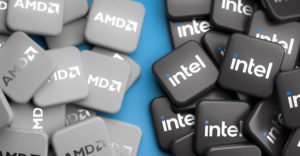
Microsoft on Monday announced the worldwide release of Exchange Server 2010.
Exchange Server 2010 is at the heart of Microsoft’s unified communications push. The idea behind unified communications is to let users contact other people based on their availability and communicate with them in the best possible way. This could be e-mail, VoIP (Voice over Internet Protocol), instant messaging, or audio, video or Web conferencing.
All communications are accessible with a single sign-on and in a single in-box. Users can connect with other people from within Microsoft Office applications.
Exchange Server 2010, Windows 7 and Windows Server 2008 R2 are among a new generation of Microsoft solutions designed for increased productivity and reduced costs coupled with innovation. Redmond calls the combination “the New Efficiency.” Other applications included in this are SharePoint Server 2010, Visio 2010 and Microsoft Project 2010.
Microsoft Exchange Server 2010 has an integrated email archive which makes it easier to store and query email across an organization. Other features include MailTips, which warns users before they make a mistake with email such as sending an email to a large group, for example; and an email “mute button” which lets people remove themselves from an irrelevant email string.
Exchange Server 2010 went into public beta in April. It is scheduled for release to manufacturing in the first half of 2010.
IT departments get common tools to manage security, compliance and archiving policies for corporate messaging and telephony systems in Exchange Server 2010. Built-in security technologies include real-time antivirus, antispam and security for email and instant messaging. Exchange Server 2010 also has built-in compliance and encryption features, and offers failover and redundancy enterprise-wide.
Unified Communications at Microsoft
Perhaps the most important thing about unified communications is that Microsoft has made it possible at last, according to Rob Enderle, principal analyst at the Enderle Group. “It was incredibly difficult to do this because telecommunications and computer technology don’t really speak the same language,” he told TechNewsWorld. “This took over two decades to actually accomplish in a volume product, and that makes it rather significant.”
Exchange Server 2010’s universal inbox will deliver e-mail, voice mail, instant messaging and text messaging consistently across any device, including smart devices. “Microsoft has opened up its interfaces, and Apple has licensed ActiveSync, so for those that want access, these services will be available,” Enderle said.
Keeping Things Secure
Forefront Protection 2010 for Exchange Server is also available for public trial worldwide, announced Microsoft Business Division President Stephen Elop.
Forefront Protection 2010 is aimed at providing security for Exchange Server 2010 users. However, Microsoft needs to move carefully, Enderle warned. “This is Microsoft going the IBM route of owning their own security again,” he pointed out.
Initially there could be problems with security, Enderle said. However, the end result should be a blended security solution that can better respond to both the threats the platform faces and the changes it undergoes in real time. “Exchange will be changing a lot over the next few years, and keeping up with those changes is likely where Forefront should stand out,” Enderle explained.
Calling Out to Partners
More than 45,000 partners have been trained on Windows Server 2008 R2 and Exchange Server 2010, according to Microsoft’s Elop. Several partners announced new services and solutions for Exchange Server 2010 on Monday. They include storage vendor EMC, chip maker Advanced Micro Devices, Dell, and security vendors Kaspersky Labs and Symantec.
Exchange Server 2010 helps organizations cut storage costs, Elop stated. “Exchange Server 2010 customers are already reporting cost savings of up to 70 percent thanks to a simplified high-availability model and support for lower-cost storage,” he said. Enterprises can choose their own storage methods, such as storage area networks, direct attached storage or desktop-quality storage.
Cutting storage costs could be a big win for Exchange Serve 2010. “Storage was incredibly expensive under older versions of Exchange,” Enderle explained. “It required small mailboxes and huge chargeback expenses, resulting in draconian record destruction policies. This became the biggest complaint about the product and, as a result, it floated to the top of the pile to be fixed.”
Customers shouldn’t just look at the upfront price tag for storage, Roberto Mendizabl, global practice manger for Exchange solutions at storage vendor EMC, told TechNewsWorld. “A lower point of acquisition is a good fit for some markets, but you should also look at other areas such as the cost of uptime, the cost of maintenance and the cost of recycling the technology,” he explained.





















































